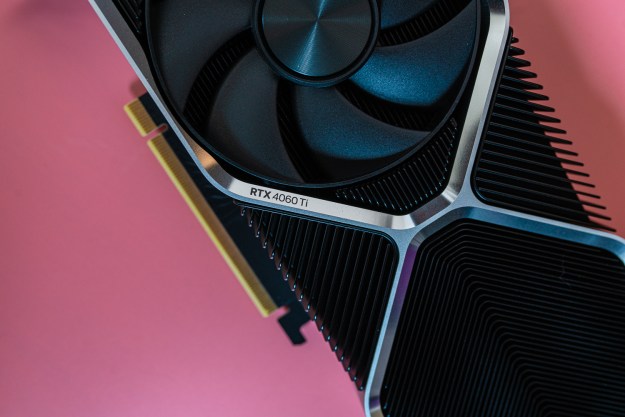Asus’ love affair with the GTX 950 continues to blossom. This time, it’s a fun-size card built specifically for Mini-ITX gaming builds, available in two slightly different variations.
The tiny card measures just 6.8 inches long, a full inch and a half shorter than Asus’ standard 2GB GTX 950. That’s a nice fit for pint-sized Mini-ITX motherboards and cases, and it doesn’t have to sacrifice performance to get there.
Asus is actually offering two versions of the budget brawler, the GTX 950 Mini 2G and 2GD5. Both feature 2 GB of GDDR5 memory clocked at 6,610MHz. Both pack in the same 768 CUDA cores. Both have the same 1,026MHz base clock with 1,1190MHz boost. And both even have the same outputs: one DVI, one HDMI 2.0, and one DisplayPort. The difference isn’t in design, it’s in power.
The 2GD5 requires a six-pin PCIe power connection, for a TDP of up to 150 watts. The 2G version, on the other hand, has a TDP of just 75 watts, and requires no additional PCIe connection. Despite that power difference, the lower-power 2G version has an optional OC mode. Flipping that switch kicks the base clock up to 1,051MHz, and the boost clock up 1,228MHz.
These base clocks are in line with the 2G and 2GD5 versions of the full-sized cards. That means that Asus has achieved this feat of power reduction in one of a few ways. One option is binning, or sorting out the more stable chips at higher clock speeds and using them in higher end cards. This practice is usually what leads to OC and Super OC cards anyway, and combined with well-managed throttling could bring the wattage down to manageable levels. We’ve reached out to Asus for more information, and will update when we have a statement.
The GTX 950 already strikes a great balance between price and performance, offering up buttery smooth 1080p gaming for under $200. Our only complaint in the review was the physical size of the card, but if the 950 Mini can pack the same punch in a smaller footprint, it will set it apart from the best in terms of value. Priced at just $170, the GTX 950 Mini 2GD5 could be a steal for gamers looking to squeeze more power into a tiny battle station.
Editors' Recommendations
- We finally know the price of Asus’ most powerful gaming NUC
- The best GPUs if you’re upgrading from a GTX 1650
- To celebrate its milestone, here are the best (and worst) examples of RTX in games
- Nvidia’s DLSS 3.5 update flips ray tracing on its head
- Asus just embarrassed everyone with its new gaming keyboard



